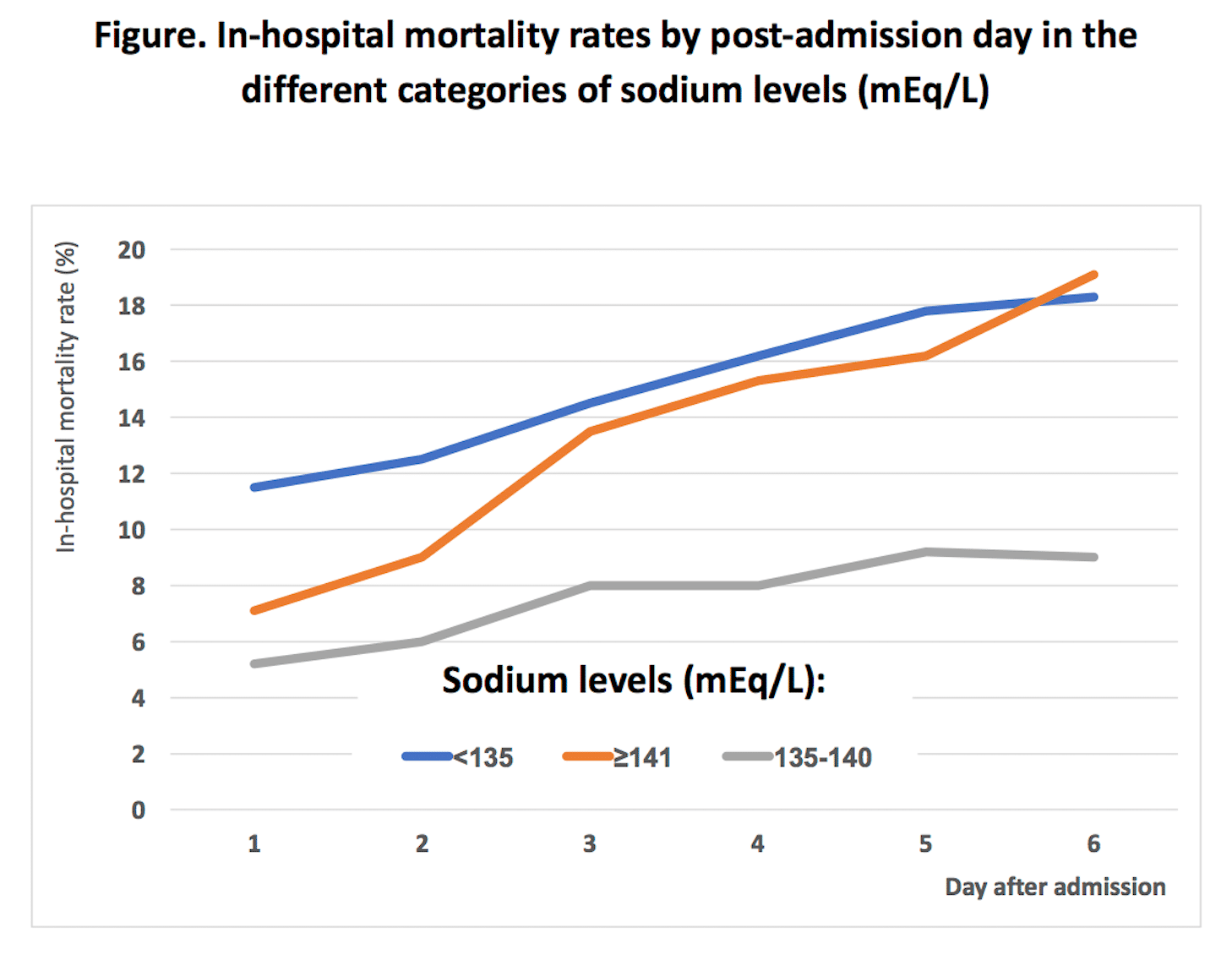
Sodium Levels and Changes Trough out an Admission with Acute Myocardial Infarction are Markers of In-Hospital Mortality
2Internal Medicine E, Rabin Medical Center, Beilinson Hospital
Background: abnormal sodium concentration is a common electrolyte disturbance in hospitalized patients. Hyponatremia upon admission is a poor prognostic marker in acute myocardial infarction (AMI) patients. Little is known about sodium levels dynamics and prognosis throughout AMI hospitalization.
Aims: to evaluate the association between sodium levels and in-hospital mortality in AMI.
Methods: retrospective analysis of AMI patients hospitalized for a week or more in a tertiary hospital. All sodium levels six days post-admission were categorized in three groups: decreased level (
Results: 10,416 patients were included (mean age 67.8±14.0 years, 33.4% women, 45.5% STEMI). In-hospital mortality was 6.6%. Decreased level was more frequent in non-survivors throughout the study period while the prevalence of increased level was similar in both groups upon admission, increasing consistently thereafter, steeper in non-survivors. Decreased and increased levels upon admission were related to higher risk for in-hospital mortality, compared with the reference group (OR=1.47 and OR=1.33 respectively, p
Conclusions: decreased and increased sodium levels are associated with excessed risk for in-hospital mortality in AMI patients. The risk is unchanged for decreased levels and consistently grows for increased level.


Powered by Eventact EMS